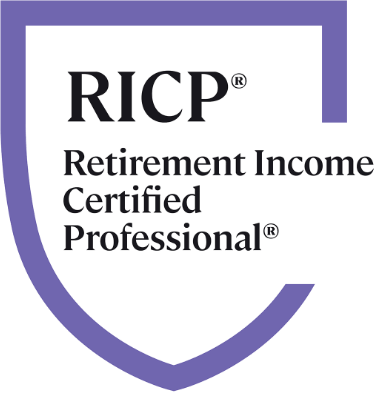As a hardworking individual, you’ve likely spent the majority of your career focused on diligently managing your finances and saving. Now, as retirement approaches, you can see the finish line and look forward to when you can finally reap the rewards of all your hard work. You may be wondering how to convert your savings into an income for daily living. That’s why we created the following guide with our top 5 tips for generating retirement income from your investment portfolio.
- Calculate How Much You Can Spend
Before making any decisions about how to withdraw from your portfolio, it’s crucial to first understand how much you can safely spend. The last thing you want is to spend too much based on a general rule of thumb and risk running out of money later in retirement. There are several factors to consider when determining how much you can safely spend, including long-term goals, lifestyle expenses, expected life span, and healthcare needs. Working with a qualified financial professional is a great way to determine the right amount for your needs.
- Understand the Different Withdrawal Strategies
Once you have determined how much you can safely spend, it’s time to look at the different withdrawal strategies available. In general, there are two main methods for turning your savings into income:
Systematic Withdrawal Approach
With the systematic withdrawal approach, you withdraw a fixed percentage of your retirement savings each year, typically between 3% and 5%. The general rule of thumb is 4% in the first year of retirement and increase the amount each year to account for inflation. The withdrawal rate is based on the value of the portfolio at the start of each year, so the amount of income can fluctuate depending on market performance.
This strategy allows you to generate a steady stream of income while still allowing for flexibility and potential growth of your investments. However, it’s important to monitor the withdrawal rate to ensure the portfolio can last throughout retirement.
Bucket Approach
Another way to optimize your portfolio longevity is to divide your savings into different buckets to match different time horizons. Each bucket will have investments tailored to that time horizon in terms of asset class, risk level, and liquidity.
One common approach is to divide your portfolio into three buckets:
- A short-term bucket will be invested conservatively in cash, bonds, and other low-risk assets. This bucket is for your expenses over the next 1-3 years.
- A medium-term bucket will be slightly more aggressive, investing in a mix of stocks and bonds to generate growth and income over the next 3-10 years.
- A long-term bucket will take on much more volatility by investing primarily in stocks or other growth-oriented assets for expenses that are 10-plus years away.
By dividing your portfolio into buckets, you can generate income from your medium-term and long-term buckets while ensuring you have the funds you need for near-term expenses. Keeping the long-term bucket invested in growth assets also increases your odds of keeping pace with inflation over time.
- Consider Tax Efficient Withdrawals
You may not think much of it, but the order in which you withdraw from your investment accounts can significantly impact the longevity of your portfolio. Navigating the complex landscape of retirement savings can be a daunting task, especially when it comes to withdrawing your hard-earned money in a tax-efficient manner. The goal of a tax-efficient withdrawal strategy is to maximize your retirement income while avoiding giving a disproportionate amount back in taxes.
Retirement savings are often spread across various types of accounts, each with its own tax implications. These typically include tax-deferred accounts like traditional IRAs and 401(k)s, tax-free accounts such as Roth IRAs and Roth 401(k)s, and taxable investment accounts. The key to a tax-efficient withdrawal strategy lies in understanding the tax treatment of each account type and strategically planning withdrawals to minimize tax liability.
Tax-Deferred Accounts
Withdrawals from tax-deferred accounts are taxed at your current income tax rate. Since these accounts are funded with pre-tax dollars, the IRS requires that you start taking required minimum distributions (RMDs) at either age 72, 73, or 75—depending on the year of your birth. Actively planning your withdrawals from these accounts can help you manage your tax bracket in retirement.
Tax-Free Accounts
Roth IRAs and Roth 401(k)s offer tax-free withdrawals in retirement, as these accounts are funded with after-tax dollars. There are no RMDs for Roth IRAs during the owner’s lifetime, making them excellent tools for managing taxes in retirement.
Taxable Investment Accounts
Gains from the sale of investments in taxable accounts are subject to capital gains tax, which is generally lower than the income tax rate. Utilizing these accounts can be a strategic way to access funds with lower tax implications.
Before making withdrawals, it’s crucial to understand your current tax bracket and how potential withdrawals could impact your tax situation. This understanding can guide you in deciding which accounts to withdraw from first.
There is no “one size fits all” approach here, and rules of thumb such as withdrawing funds from taxable accounts first, then tax-deferred accounts next, and finally from tax-free accounts, ignore the progressive nature of the U.S. tax code.
For those in lower tax brackets, strategically withdrawing from tax-deferred accounts up to the limit of your current tax bracket can be a smart move. This strategy takes advantage of lower tax rates and the standard deduction to minimize overall tax liability.
A Roth conversion involves transferring funds from a tax-deferred account to a Roth account. This strategy requires paying taxes on the converted amount but can be beneficial if you expect to be in a higher tax bracket in the future. Creating a “ladder” by gradually converting funds over several years can spread out the tax burden and thus reduce your average tax rate over your lifetime.
- Consider Annuities
Another important consideration for generating retirement income is annuities. These can provide you with a guaranteed lifetime source of income, such as a pension or Social Security, which can help reduce the financial stress and worry some retirees experience. Studies have even shown that retirees are happier when more of their retirement income comes from guaranteed sources. Annuities can, in essence, give you a “license to spend” since the sources of these funds never run out.
When you purchase an annuity, you pay a lump-sum premium to an insurance company in exchange for regular income payments over a set amount of time, or for the rest of your life.
Annuities can be a good option for retirees who want the stability that comes from a consistent income stream. However, it’s important to consider the fees associated with annuities, which can be higher than other investment options. Additionally, it’s important to select an annuity that fits your needs and goals, as there are many different types of annuities available with different features and benefits.
At Tapparo Capital Management, we offer commission-free annuities. We can work with you to help you determine if an annuity is a good option for you and which type of annuity is best suited for your retirement income plan.
- Include Short- and Long-Term Growth Investments
Many people are quick to assume that retirement means your portfolio must become ultra-conservative, consisting only of cash and bonds as a way to safeguard against market volatility. While your portfolio should become slightly more conservative, you still need assets geared toward long-term growth.
How I like to invest is to have the next three years of living expenses safely in money market funds and laddered bonds. This way, the funds are there when needed. The rest of the portfolio can be invested in growth as well as dividend-paying investments. The dividends can be used to fill the short-term bucket (i.e., the next three years of living expenses). This way we are not forced to sell equities when the market is down. Selling equities in a down market hurts your retirement portfolio, and we want to avoid that whenever possible.
Those looking to maximize their retirement savings should invest in a diversified portfolio that includes both income and growth-style investments. Of course, the specific allocation that’s right for you depends on your individual financial goals, risk tolerance, and other factors. This is something we can help you determine at Tapparo Capital Management.
Is Your Retirement Income Strategy on Track?
The transition from pre-retiree to retiree is one of life’s major milestones and requires adequate planning and preparation. It can be challenging to go from saving for retirement to spending your retirement savings, especially if you don’t have a withdrawal strategy in place.
Tax-efficient withdrawal strategies require a careful and personalized approach. By understanding the tax implications of different accounts and employing strategic withdrawal methods, retirees can significantly reduce their tax burden, helping them keep more of their retirement savings.
At Tapparo Capital Management, we understand the nuances of tax planning and can evaluate your retirement income requirements to create a strategic plan tailored to your unique financial situation. We can help you navigate the complexities of retirement withdrawals with confidence. To schedule a “Get Acquainted Call” to see if we are a good fit for each other, call 978-887-1121 or email andrew@tapparocapital.com.
About Andy
Andrew Tapparo is a fee-only financial advisor at Tapparo Capital Management, a financial planning firm in Topsfield, MA, helping clients turn their savings into a retirement income that lasts. Inspired by the quote “Choose a job you love, and you will never work a day in your life,” Andy founded Tapparo Capital Management in 1997 with a passion for helping clients enjoy a truly worry-free and fulfilling retirement and experience financial freedom. As a Retirement Income Certified Professional (RICP®), he designs retirement strategies along with sound money management to help clients retire with confidence.
Andy holds a Bachelor of Science in Industrial Engineering from Rochester Institute of Technology in Rochester, New York, and a Master of Science in Finance from Bentley University in Waltham, Massachusetts. Specializing in retirement income planning, Andy completed a comprehensive financial industry education program at The American College of Financial Services and was awarded the Retirement Income Certified Professional® designation. He is frequently quoted in the media as a financial expert.
Andy and his wife, Susan, live in Topsfield, Massachusetts, and have two beautiful daughters. Outside of work, he is an automobile enthusiast, enjoys taking road trips, and loves the Outer Banks of North Carolina. In his spare time, he volunteers with the local high school varsity girl’s basketball team as the team statistician and runs the team’s website. He is passionate about supporting charities that serve our veterans and their families. To learn more about Andy, connect with him on LinkedIn.



